Deborah Swift's Blog, page 16
September 14, 2021
New Release! The Sins of the Father by Annie Whitehead #Mercia #HistFic
A father’s legacy can be a blessing or a curse…
AD658:
The sons of Penda of Mercia have come of age. Ethelred, the youngest, recalls little of past wars while Wulf is determined to emulate their father, whose quest to avenge his betrayed kinswomen drew him to battle three successive Northumbrian kings.
Ecgfrith of Northumbria is more hostile towards the Mercians than his father was. His sister Ositha, thwarted in her marriage plans, seeks to make her mark in other ways, but can she, when called upon, do her brother’s murderous bidding?
Ethelred finds love with a woman who is not involved in the feud, but fate intervenes. Wulf’s actions against Northumbria mean Ethelred must choose duty over love, until he, like his father before him, has cause to avenge the women closest to him. Battle must once more be joined, but the price of victory will be high.
Can Ethelred stay true to his father’s values, end the feud, keep Mercia free, and find the path back to love?
This is the second of the two-book series, Tales of the Iclingas.
My Amazon Review of Cometh The Hour – first in series:
5.0 out of 5 stars Fantastically detailed account of life in early BritainReviewed in the United Kingdom on 27 February 2018
I know nothing about this period of British history, and was delighted to find this gripping book gave me a bird’s eye view of life in 7th century Mercia and Northumbria. Fortunately for the reader, the author has adapted some of the names to make them easier to read and remember, and the result was a fluid reading experience despite the complexity of the allegiances of the clans at the time.The writing is visceral, describing bloodshed and battles, the clash of the old religion with the new Christian faith, and the effect of marriage and alliances between rival kings. This is a novel in the best tradition of sagas – you can’t help but feel for the characters, especially the women like Derwena, as they watch their men carve out their place in this hostile environment, where war is an ever present reality. Highly recommended.
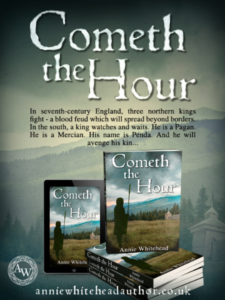 Buy the bookContact Annie via her website: http://anniewhiteheadauthor.co.uk/This is an unusual period and I found it fascinating. I already have Sins of the Father lined up on my kindle, and a review will be coming soon.Have any of you read any other novels set in this time? If so, do post them in the comments.The post New Release! The Sins of the Father by Annie Whitehead #Mercia #HistFic first appeared on Deborah Swift.
Buy the bookContact Annie via her website: http://anniewhiteheadauthor.co.uk/This is an unusual period and I found it fascinating. I already have Sins of the Father lined up on my kindle, and a review will be coming soon.Have any of you read any other novels set in this time? If so, do post them in the comments.The post New Release! The Sins of the Father by Annie Whitehead #Mercia #HistFic first appeared on Deborah Swift.
August 15, 2021
The Queen’s Spy by Clare Marchant #BookReview #CoffeePotBookClub
About the book:
1584: Elizabeth I rules England. But a dangerous plot is brewing in court, and Mary Queen of Scots will stop at nothing to take her cousin’s throne.
There’s only one thing standing in her way: Tom, the queen’s trusted apothecary, who makes the perfect silent spy…
2021: Travelling the globe in her campervan, Mathilde has never belonged anywhere. So when she receives news of an inheritance, she is shocked to discover she has a family in England.
Just like Mathilde, the medieval hall she inherits conceals secrets, and she quickly makes a haunting discovery. Can she unravel the truth about what happened there all those years ago? And will she finally find a place to call home?
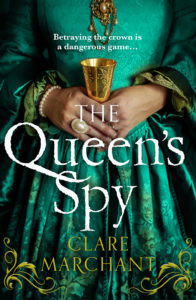
Review of The Queen’s Spy
A proper Sunday afternoon read, of escapism and historical intrigue!
I am always wary of double timeline novels because I often find I am more in sympathy with one of the timelines than the other, and this was certainly initially the case with The Queen’s Spy. I was immediately hooked into orphan photographer Mathilde’s story, but Tom’s took me a lot longer to warm to. But as the novel carried on I found my sympathies changing and really grew to like the deaf mute apothecary Tom, who, because of his ability to lip-read gets taken on by the unpredictable Queen Elizabeth as a spy. He really grew on me and so it became a rare thing for me where I was equally invested in both stories.
The real-life secondary characters of the Tudor court are very well drawn, including Elizabeth I herself and Walsingham, the architect of the Babington Plot to replace Elizabeth with Mary Queen of Scots. The background detail is vibrant and convincing, particularly the herbalism which plays a key role in linking the stories together. The discovery of an enigmatic painting behind a panel in the chapel wall, and the subsequent arrival of art historian Oliver adds a romantic element to the modern day story, whilst the Queen’s lady-in-waiting, Isobel, supplies the romance in the Tudor thread. This is not a novel of ‘derring do’ despite the title. It is more about developing relationships – Tom’s quest for acceptance and a way to make himself useful in the world, and Mathilde’s longing for family. I particularly liked the way that step-sister Rachel ‘brought round’ Mathilde after her initial prickly start, and thought this was realistically done. The parallels between the two stories were drawn with a light touch. All in all I’d recommend this to anyone who enjoys dual timeline novels, and particularly to fans of the Elizabethan period.
Where to buy the book: Amazon UK US Kobo iBooks Audio
Find Clare on Social Media @ClareMarchant1
Facebook: https://www.facebook.com/claremarchantauthor
Instagram: https://www.instagram.com/claremarchant1
The post The Queen’s Spy by Clare Marchant #BookReview #CoffeePotBookClub first appeared on Deborah Swift.August 1, 2021
Camelot and the Victorian Era – Kingfisher by D K Marley #CoffeePotBookClub #HistoricalFiction
Welcome to D K Marley, who is giving us an insight into the fascinating historical background to her novel, Kingfisher.
The Disappearance of the Halcyon Days – Camelot and the Victorian Era
by D. K. Marley
There are two definitions of the word halcyon. First, as an adjective denoting a period of time in the past that was idyllically happy and peaceful; second, as a noun it is the name of a mythical bird, a kingfisher, said by ancient writers to breed in a nest floating at sea during the winter solstice, charming the wind and waves into calm. Both definitions play a key role in the development of my novel “Kingfisher” and relate to two time periods lost in history and considered by many to be halcyon days.
Vala Penrys, my main character, is born in 1886 at the height of the idyllic days of Queen Victoria when the wealth and power of Great Britian as an Empire stretched across the globe, bringing an age of enlightenment and ‘innocence’ to faraway lands such as India, the West Indies, and Africa. At least this was the goal behind many of the political agendas formed by those in government during that time period, Great Britian’s agenda often at the sacrifice of what those lands wanted for their own people.
Part of the reason for the supposed halcyon days of Victorian England is fixed in the idea of the moral climate. Often viewed as quite dour and non-indulgent, there was a zero tolerance towards promiscuity and criminality, the ‘stiff-upper-lip’ persona; and yet, this was the age when the ideas of chivalry took root in Victorian-era art and when writings such as “The Idylls of the King” and “The Mabinogion’ created a fascination with the legends of Camelot, of courtly love, and the romantic notions of a golden Kingdom matching that of Victoria’s.
Vala’s household is one immersed in these ideals, the resplendent representation of a perfect Victorian family – father, mother, and five girls with a country home in Wales, a home in London with a respectable Knightsbridge address, servants to care for their comforts, fine dresses, and the spectacular London Seasons filled with presentations at court, balls, and parties, all with the goal of snatching a titled gentleman with a good income and social standing.
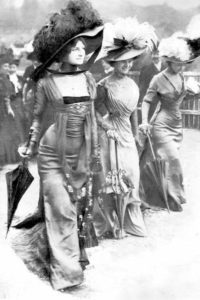
As with most families of the upper class, they lived in a world set apart from the realities of the middle class and poor – a dream world of comfort, and yet a world of stark inequality. A world where men had the freedom to select a profession of their choosing and were viewed as creatures of ambition, liberty, enterprise, reason, and aggression; and yes, sexual morality was a different standard for men versus women. Women were expected to marry (hopefully, well), be submissive, provide heirs, and keep the estate and servants under her care. Even a hint of scandal upon a woman’s name in regards to morals could render her an outcast for the rest of her life. It was not that way with men. Women were property, and only men were granted the right of divorce due to infidelity. This vein of the ‘secret life’ of many influential and political men of the time plays out in the story, showing a contrast between the Victorian days and the days of King Arthur that the Victorians admired.
When you travel back to Arthur’s day, generally regarded as between the 3rd and 4th century, the days of Uther Pendragon, the legend tells of different halcyon days, ones where women held a special position in relation to the myths and stories of Avalon. The priestesses of the sacred isle were the ones revered as creatures of ambition, liberty, enterprise, reason, and sometimes, aggression (such as with the infamous Morgayne le Fae). Also, they were not property but had the right to choose to marry or to bear children as a result of the rituals of the Beltane festivals. In the heyday of the Kingdom of Camelot, halcyon days reigned or so the legend says.
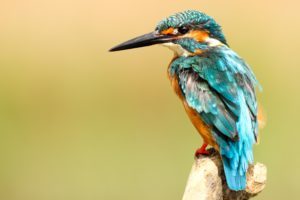
Even in our modern day, we refer back to “Camelot” as the ideal Kingdom with a golden King dispensing justice, loyalty, and honor, all backed by his chivalrous Knights of the Round Table. We need not look any further than the days of President John F. Kennedy to see how people relate his government with those ancient dream-like days, an exquisite time in history people long to return to. As in both cases, with Victorian England and with the Kingdom of Camelot, those halcyon days evaporated with the heat of war – the declaration from Germany against Britain in 1914, and the rage of Mordred against King Arthur. Death, blood, betrayal, pain, suffering, all instruments which forever removed those idyllic days.
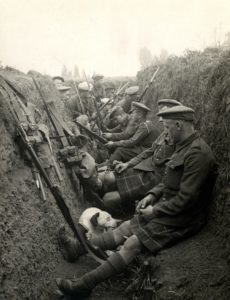
At the onset of the novel, the Penrys family are stuck in their day-to-day routine, sipping tea, peering out windows, reciting poetry… until their world is shattered by the announcement of the assassination of Archduke Ferdinand and his wife, Sophie, in Sarajevo. In quick haste, the girl’s father, Ian, leaves for the war, and their fragile mother teeters on the edge of losing her grip with reality. Vala is desperate to escape the shadow of war creeping across Britain and yet, she feels helpless. Her own odd fascination with the stories of Camelot develop into the realization that there is more to the stories than just myths, that somehow the strange dreams she has about the kingfisher bird, and the voices she hears near the rowan tree on their estate are connecting her family with the legend. She longs for the halcyon days before the war, and for the chivalrous days of King Arthur. Not only that, but like most Victorian girls of her class and age, she desires a handsome gentleman to sweep her off her feet.
The war changes many things, and the discovery that she is a time traveller gives her the idea that she is destined to bring back those halcyon days in the past, present, and for the future.
When Britain emerged from WW1, it was like looking through a glass darkly, a murky window covered with a film of dust. Everybody from the nobility to the poor dealt with some type of loss, with death, and with the utter shattering of the world they knew before. How does one go backwards from so much death on a world wide scale? Or even from a small personal scale? The horrendous images suffered by those in the actual battle, and the changes wrought upon the women at home forever etched upon their minds and hearts.

The world evolved, nevermore to see those halcyon days again. And yet, even to this day, we still remember, we still long for that dream, thus the reason for so many novels about those days of elegant parties, fancy ball gowns, men in silk cravats and top hats, or romantic knights on horseback, the showering apple blossoms carpeting the pathways to Avalon, and the sunlight peeking over Glastonbury Tor.
In Ovid’s Metamorphosis, the origin of the ‘halcyon days’ is the story of Alcyone and Ceyx of ancient Greece who were transformed into kingfishers by the Gods. For seven days in winter, no storms occur so that she might lay her eggs and make her nest on the beach. With the beat of her wings, she calms the waves and the wind so together they might nurture their young. The phrase has come to refer to a bright interval in the midst of adversity – days we all long for even in the COVID time we are living in today.
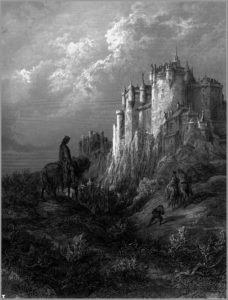
We can’t help it, we long for Camelot the same way Vala Penrys longs for it in “Kingfisher”. After all, if you had the power to go back and change history, to bring about those peaceful days, wouldn’t you risk everything to do it?
Kingfisher
The past, future, and Excalibur lie in her hands.
Wales, 1914. Vala Penrys and her four sisters find solace in their spinster life by story-telling, escaping the chaos of war by dreaming of the romantic days of Camelot. When the war hits close to home, Vala finds love with Taliesin Wren, a mysterious young Welsh Lieutenant, who shows her another world within the tangled roots of a Rowan tree, known to the Druids as ‘the portal’.
One night she falls through, and suddenly she is Vivyane, Lady of the Lake – the Kingfisher – in a divided Britain clamoring for a High King. What begins as an innocent pastime becomes the ultimate quest for peace in two worlds full of secrets, and Vala finds herself torn between the love of her life and the salvation of not only her family but of Britain, itself.
“It is, at the heart of it, a love story – the love between a man and a woman, between a woman and her country, and between the characters and their fates – but its appeal goes far beyond romance. It is a tale of fate, of power, and, ultimately, of sacrifice for a greater good.” – Riana Everly, author of Teaching Eliza and Death of a Clergyman.
Available on #KindleUnlimited, or BUY IT HERE: Universal Link: https://amzn.to/3A94jzi
Connect with D K Marley :
Website: https://www.thehistoricalfictioncompany.com
Blog: https://www.thehistoricalfictionpress.com/hist-fic-chickie-blog
Podcast: https://www.thehistoricalfictionpress.com/podcast
Twitter: https://twitter.com/histficchickie
Facebook: https://www.facebook.com/therealdkmarley.author

The post Camelot and the Victorian Era – Kingfisher by D K Marley #CoffeePotBookClub #HistoricalFiction first appeared on Deborah Swift.
July 27, 2021
The Marquise of Darkness by Phil Syphe #France #poison #blog
Having just finished a book abut an Italian poisoner, I’m fascinated to have Phil Syphe here today to talk about another woman involved in poisoning.
Over to Phil to tell us more.
Set in seventeenth-century France, The Marquise of Darkness is based on the real-life exploits and crimes of poisoner Marie-Madeleine d’Aubray, Marquise de Brinvilliers. Because ‘Marie-Madeleine’ is a bit of a mouthful, I opt for ‘Madeleine’ in the novel, which I feel suits her better than just ‘Marie’.
I’m aware some readers will be familiar with Madeleine’s history, but for the benefit of those who aren’t, I’ve avoided revealing any spoilers below.
The Story
The story opens in Madeleine’s Parisian home during 1659 and spans the next two decades.
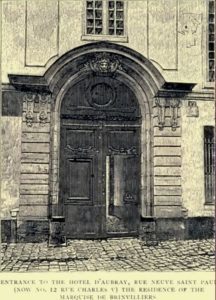
Madeleine is married to luckless gambler Antoine who, in 1660, receives a marquisate. While Madeleine is happy to receive the title of Marquise de Brinvilliers, she despairs as her husband wastes their fortune. Rankled by his adulterous affairs, she takes lovers of her own, the foremost being the dashing Chevalier Godin de Sainte-Croix. Sainte-Croix is the ultimate charmer, yet his handsome face masks the darkness within him. Sainte-Croix persuades Madeleine to help fund his secret business of dealing untraceable poisons to anyone wanting rid of an enemy or to kill a rich relative to gain an inheritance. It’s an inheritance that Madeleine needs, thanks to her husband’s continual losses at the card table. For the plan to succeed, Madeleine must poison a family member with her own hands.
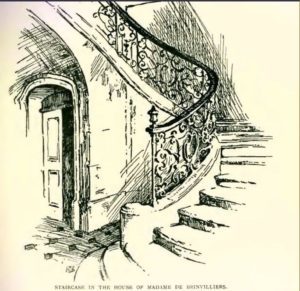
Madeleine and Sainte-Croix commit numerous atrocities for financial gain, or to settle scores. They stop at nothing to get what they want, be it via seduction, strangulation, shooting, poisoning, or arson. Sainte-Croix employs six mercenary servants, with the most formidable being La Chaussée, who will perform any vicious act for money. This dangerous man is the perfect killing tool. Combined, La Chaussée, Sainte-Croix, and Madeleine are a triumvirate of evil.

In the background of all the poisonings, sex, and violence are Madeleine’s five children. She loves her eldest son and daughter, but three illegitimate children are less favoured.
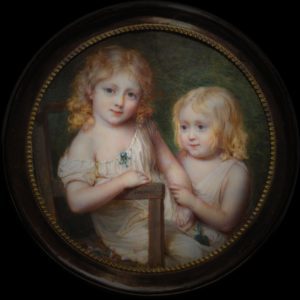
Louis, one of two boys fathered by Sainte-Croix, idolises his mother. Although Madeleine isn’t cruel to him, Louis yearns for the love she gives to his eldest siblings.
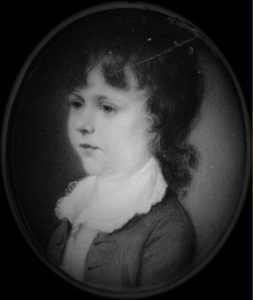
Marie, sired by Madeleine’s cousin, is shy and ugly. This she could live with, if her mother would spare her a little kindness.
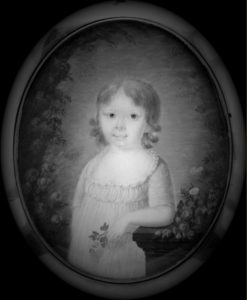
The older Marie grows, the deeper Madeleine’s resentment towards her becomes. Can Marie find a way to earn her mother’s love, or will she become victim to Madeleine’s dark nature?
Background
Having been fascinated by Madeleine and her story for several years, I decided in 2019 to write a novel about her. During my research, biographies about her proved to be contradictory, while many online sources get several facts wrong, or omit important details. Whilst modern books bring certain taboo facts to light, which were unsuitable for publication centuries ago, the best and most thorough resource I found was a 1912 publication called Madame de Brinvilliers and Her Times, 1630–1676, by Hugh Stokes.
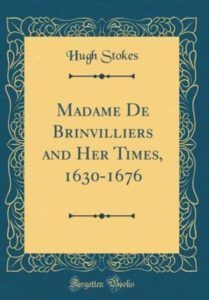
Although Stokes’s biography is old, his work reproduces detailed accounts and official records that helped me structure parts of my novel. The most reliable source, which he quotes extensively from, is a memoir written by someone who met Madeleine near the end of her life, namely Abbé Edmé Pirot. Pirot clears up much of the misinformation given in certain modern biographies and on websites.
Below is a quote from Stokes citing Pirot regarding the latter’s impressions of Madeleine:
‘She was very clever in finding a way out of a difficulty, and she made up her mind with rapidity. On the other hand, she was frivolous, and had no power of application. She did not like to talk too much about the same subject. She refused to be bored. But she had a complete command over herself, and seldom lost her self-composure. If her features were naturally sweet, when sudden anger seized her, a frightful grimace masked her face.’
As for the other two members of the ‘triumvirate of evil’, Sainte-Croix was, according to Stokes, ‘a handsome young officer with a fascinating manner’ who was mixed up in more deadly affairs than those dramatized in The Marquise of Darkness, most of which are vague and would’ve over-complicated my plot.
Regarding La Chaussée, he was, to quote Stokes:
‘a bold, impudent wretch, who swaggered through the streets, fearing no man. He had an amount of clever cunning. Sainte-Croix and the Marquise de Brinvilliers could not possibly have found a more zealous and devoted assistant in their crimes.’
Most characters in The Marquise of Darkness were real people, including many secondary and incidental characters. I elaborate further on this, and more on what’s truth or fiction, in my author’s note.
I’ve used my imagination to fill in any gaps in Madeleine’s history. All scenes featuring her five children are invented, as little is known about them, including the names of the four youngest. With a killer for a mother, and a weak-minded father, their lives must’ve been unstable.
An image of Madeleine’s portrait appears on my novel’s front cover. Pirot’s described her eyes as blue, though they look darker in this image, while her chestnut hair is powdered.
The Marquise of Darkness is available from Amazon: BUY HERE US BUY HERE UK
Note to Readers: True to the history, the novel contains graphic scenes of torture and violence, plus scenes of a sexual nature.
Facebook: Phil Syphe, Author
Twitter: @PhilSypheAuthor
The post The Marquise of Darkness by Phil Syphe #France #poison #blog first appeared on Deborah Swift.July 8, 2021
Below Stairs by Charlotte Betts #Servants #History #Edwardian
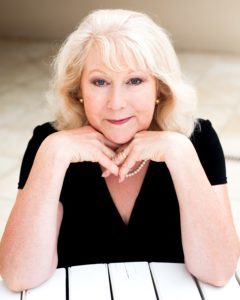 I’m thrilled to welcome Charlotte Betts to my blog today to tell us about the history that features in her new novel, The Fading of The Light. I’ve read it, so can really recommend it as an exciting summer read.
I’m thrilled to welcome Charlotte Betts to my blog today to tell us about the history that features in her new novel, The Fading of The Light. I’ve read it, so can really recommend it as an exciting summer read.
Charlotte is a winner of the Romantic Novelists Association Award for Historical Fiction, and this trilogy of books about the artists community in Cornwall is full of fascinating characters and lush settings.
Charlotte lives on the Hampshire/Berkshire borders in a C17th cottage in the woods. A daydreamer and a bookworm, she enjoyed careers in fashion, interior design and property before discovering her passion for writing historical novels.
Below Stairs by Charlotte Betts
 In 1901, the census shows that over 40% of the adult female population worked in service and this didn’t include the large number of girls, some barely ten years old. Working conditions were unregulated and a maid would often work a seventeen hour day with only one afternoon off a week and time for church on Sunday mornings. There was no legislation that protected a servant in old age or in times of sickness until the National Insurance Act of 1911 was passed.
In 1901, the census shows that over 40% of the adult female population worked in service and this didn’t include the large number of girls, some barely ten years old. Working conditions were unregulated and a maid would often work a seventeen hour day with only one afternoon off a week and time for church on Sunday mornings. There was no legislation that protected a servant in old age or in times of sickness until the National Insurance Act of 1911 was passed.
There was a stark contrast between the family’s opulent rooms and the meagre servants’ quarters. This was deliberate so that a servant didn’t get ‘ideas above his, or her, station.’ Despite low wages and, often poor conditions such as lack of sanitary arrangements, competition for places was fierce. Working as a servant was sometimes the only alternative to near starvation, providing regular meals and a roof over their head. In large country houses and London townhouses, male and female servants were separated to prevent them fraternising.

Maids were crammed into attic bedrooms, while the men were usually housed in the basement or rooms near the kitchen. If a pretty maid, however, attracted her master’s eye she had little say in the matter and would immediately be sent packing without a reference if she became pregnant.
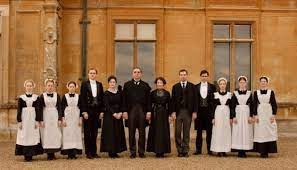
In the great houses, aristocratic employers had an army of mostly hidden servants to attend to their every need. The Duke of Devonshire once stated that a staff of two hundred were required to manage a house party of fifty guests. The number of servants employed by a family indicated their wealth and social status

There was a strict hierarchy for the staff of a prosperous family. The butler oversaw the entire household. Beneath him were several footmen, a gentleman’s valet, a lady’s maid and gardeners. A housekeeper, reporting to the butler, would have beneath her in the hierarchy a cook, kitchen maid, scullery maid, parlour maids, chamber maids, a nanny and a nursery maid for the children.

Even middle class families would have several servants, at least a cook-housekeeper, a maid or two and perhaps a gardener. A charwoman might come once a week to do ‘the rough’ and laundry might be sent out to a washerwoman. The cook would attend the mistress of the house in the mornings to decide upon the menus.
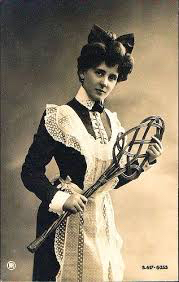 Parlour maid
Parlour maid
Servants adhered to a strict routine, often beginning their work at five-thirty am. There were few labour saving devices and plenty of elbow grease was required in the constant battle against dirt and dust from the coal fires. Carpets were brushed twice a week and rooms dusted and beds stripped daily. Endless buckets of water were carried upstairs and then the slops and night soil had to be carried downstairs. Maids must have been delighted when bathrooms were installed in their employer’s houses. After cooking and serving the family’s sumptuous meals in the dining room, the servants ate the leftovers in the kitchen. Their evening meal would be served at about 9pm, after the family had eaten, but work wasn’t finished until the family had gone to bed, the butler had locked up and the junior housemaid had taken hot water bottles upstairs, She was then free to return to her unheated attic to fall, exhausted, into bed.
After the 1870s, education became more available to the masses and literacy increased, bringing with it changing social attitudes and expectations. Young girls became reluctant to enter the endless drudgery of service if there was work available in shops, factories and even offices. During the Great War, many women left service to fill the jobs left vacant by men, even though their pay for the same job was far less than a man’s salary.
Of course, once the war was over, the surviving men wanted their jobs back, forcing many women back into service as their only option. Nevertheless, women had grasped the opportunity to show what they were capable of and this ultimately led to them being allowed to vote, though it wasn’t until after 1928 that all female servants were granted this privilege. Meanwhile there were still floors to be scrubbed and grates to be cleaned and the master’s boot laces to be ironed.
 Buy Here:
https://www.yourswithlove.co.uk/titles/charlotte-betts/the-fading-of-the-light/9780349423012/
Buy Here:
https://www.yourswithlove.co.uk/titles/charlotte-betts/the-fading-of-the-light/9780349423012/
To be the first to hear about Charlotte’s new releases and her writing life, please do visit her at www.charlottebetts.co.uk
Twitter: @CharlotteBetts1
Facebook: Charlotte Betts – Author
Instagram: charlottebetts.author
Finished reading? You might like this post – Servants in Historical Fiction
The post Below Stairs by Charlotte Betts #Servants #History #Edwardian first appeared on Deborah Swift.June 8, 2021
Sisters At War – & the secret bunker in Liverpool – by Clare Flynn #WW2
Today I’m delighted to welcome back Clare Flynn, a writer whose books I have really enjoyed. Here’s a lovely post about her new WWII book, Sisters At War.
From Clare:
Thanks so much for inviting me onto your blog, Deborah. I visited once before to talk about a significant object – then it was a powder compact, inscribed in German. Today it’s a collection of strange pins, a long-handled rake-like instrument and a giant step ladder. The date is 1941 and the place where you’ll find them is a secret bunker under the streets of Liverpool.
When I was a child, I adored watching old black and white war films on TV – the perfect antidote to rainy Sunday afternoons. My favourite scenes were those that took place in secret military command centres where Wrens and WAAFs pushed model planes and boats around giant maps with long pointy sticks like croupiers’ rakes. It was my fantasy job – without the need for a war of course. I was born in Liverpool but had absolutely no idea that one of the most important intelligence nerve centres still lay hidden below the streets of the city.
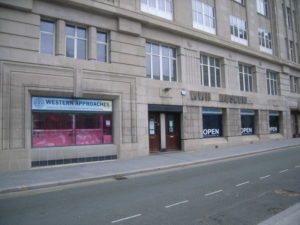
EXTERIOR OF DERBY HOUSE
Attribution Nicholas Mutton / World War II Combined Headquarters Western Approaches, via Wikimedia Commons
Western Approaches Command was a secret bunker buried under seven feet of concrete, beneath Derby House in the centre of Liverpool, just a few minutes’ walk from the waterfront. Opened in February 1940, it was like catacombs with about a hundred rooms, from sleeping quarters and offices to the nerve centre, The Map Room. The place had around 300 staff – some RAF and Royal Navy officers and a much larger number of women from the WAAFs and Wrens. This was the where the critical Battle of the Atlantic was plotted out. Men and women worked here day and night, from early 1941 until the end of the war, tracking and tracing submarines, enemy aircraft and Allied merchant convoys on the dangerous approaches to Britain from the US and Canada. The craft and the weather systems were attached as little pin symbols to the giant map. Nowadays, when we can track every ship on the planet through an app on our mobile phones, it is hard to imagine that this was done manually during the war without the benefit of satellites or sophisticated communications.
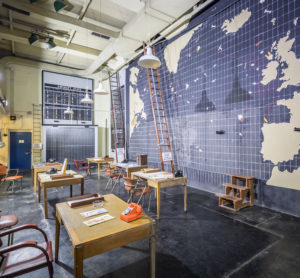
The Map Room today Image credits: Mark Carline Website
The Derby House bunker was connected to the code breakers at Station X – Bletchley Park –with intelligence passing to and fro, as vital life and death information was pieced together. Keeping Allied shipping safe as it crossed the Atlantic, which was riddled with U-boats, was a hugely challenging task – indeed a near impossible one until cracking the Enigma codes changed things.
The port of Liverpool dealt with most sea cargo coming into the UK and the war effort hung on the ability of those ships to make it across the Atlantic safely. Many didn’t. Proportionately more men lost their lives on merchant ships carrying vital food supplies and raw materials, than died in any of the British armed forces. Churchill, who made frequent visits to Western Approaches, said in his post-war memoirs. ‘The only thing that ever really frightened me during the war was the U-boat peril.’
Operations at Western Approaches continued throughout the Liverpool Blitz, when the city took a pounding, particularly during the month of May 1941. Service people working at Derby House often emerged from its depths at the end of their shifts to scenes of absolute devastation. Here is a panoramic image of the centre of Liverpool taken during the Blitz.

BLITZ PANORAMA
Attribution Ministry of Information Photo Division official photographer, Public domain, via Wikimedia Commons
When the war ended, the Western Approaches command centre was locked up and left to the spiders. It remained forgotten until someone suggested opening it to the public. Larger than London’s Cabinet War Rooms, there are radio rooms, telephone exchange, canteen and bunk rooms, the Admiral’s office and a recreated wartime street complete with shops containing typical products. But it’s the Map Room that holds the greatest fascination – with its giant wall map of the Atlantic, its enormous sliding step ladder (perilous while wearing uniform skirts I imagine!)

IMAGE OF THE MAP ROOM IN OPERATION DURING WW2
Parnall, C H (Lt), Royal Navy official photographer, Imperial War Museum, Public Domain
The perils of the Atlantic and the U-boats are all too present for my characters in Sisters at War and the activities of Derby House play a role in the story. Next time I venture up to my birthplace, I will definitely be stopping off to visit the subterranean museum. Meanwhile you can visit it virtually via the museum’s website – and of course in my novel.
 About Sisters At War
About Sisters At War
1940 Liverpool.
The pressures of war threaten to tear apart two sisters traumatised by their father’s murder of their mother.
With her new husband, Will, a merchant seaman, deployed on dangerous Atlantic convoy missions, Hannah needs her younger sister Judith more than ever. But when Mussolini declares war on Britain, Judith’s Italian sweetheart, Paolo is imprisoned as an enemy alien, and Judith’s loyalties are divided.
Each sister wants only to be with the man she loves but, as the war progresses, tensions between them boil over, and they face an impossible decision.
A heart-wrenching page-turner about the everyday bravery of ordinary people during wartime. From heavily blitzed Liverpool to the terrors of the North Atlantic and the scorched plains of Australia, Sisters at War will bring tears to your eyes and joy to your heart.
 About Clare:
About Clare:
Clare Flynn is the author of thirteen historical novels and a collection of short stories. A former International Marketing Director and strategic management consultant, she is now a full-time writer.
Having lived and worked in London, Paris, Brussels, Milan and Sydney, home is now on the coast, in Sussex, England, where she can watch the sea from her windows. An avid traveler, her books are often set in exotic locations.
Clare is a Fellow of the Royal Society of Arts, a member of The Society of Authors, ALLi, and the Romantic Novelists Association. When not writing, she loves to read, quilt, paint and play the piano.
Find Clare on her website, on Twitter or on Facebook
The post Sisters At War – & the secret bunker in Liverpool – by Clare Flynn #WW2 first appeared on Deborah Swift.May 19, 2021
A Poisonous Trade – Join Cathie Dunn as she lurks in The Shadows of Versailles
Cathie Dunn and I have both been working on books about poisoners, so it’s fab to have Cathie as a guest to give us an insight into one of the important objects in her new book, The Shadows of Versailles.
Over to Cathie:
Thank you so much, Deborah, for inviting me to your lovely blog today. I’m so thrilled to be here.
My guest post has an intriguing theme. I shall tell you about an object that’s of quite some importance in The Shadows of Versailles, even though it only features once or twice. What could it possibly be?
Here’s a hint…
[image error]
Let me tell you a little about the story first.
My new series of novels set in Paris and Versailles is set against the backdrop of the infamous Affair of the Poisons, an event that rocked the court of King Louis XIV. The Shadows of Versailles is the first in the series, and I’m currently working on the second, The Alchemist’s Daughter
[image error]
Set in the mid-1670s, The Shadows of Versailles tells the tale of a young woman, Fleur, who visits the imposing new palace of Versailles with her mother for the first time. Soon, she is dazzled by the glitter: the courtiers in their finery, the sensational entertainment, the sumptuous furnishings in the glamorous new rooms, and the beautiful grounds that reach beyond where the eye can see.
But when she falls pregnant after being seduced in the gardens of Versailles by handsome courtier Philippe, who promised her marriage, her life as she knew it comes to an end. After giving birth, her baby is whisked away by a priest with a dark reputation. She soon realizes that her son might have fallen victim to a sordid trade.
And whilst she herself is saved by Jacques, a spy for the chief of police, torn by her loss, she begins to plot her revenge on those who have wronged her
At that time, Paris was in the grip of the Affair of the Poisons. Following the execution of the Marquise de Brinvilliers, who was found guilty of murdering her father and brothers, on 17th July 1676, other cases of poisoning came to light.
[image error]
Across Paris, a robust network of fortune-tellers, midwives, alchemists, apothecaries and lawyers operated pretty much like modern-day organized crime. Supply and demand determined their actions. And demand was rising. Demand for poison!
No longer content with the harmless potions dished out by savvy fortune-tellers over decades, people now sought different ways to get what they wanted. Why would they wish to suffer a sick relative if they could easily dispose of them? Why stay in an unhappy marriage if you could sprinkle a little poison into your spouse’s food to be free to wed your lover (after a suitable – if brief – period of mourning, of course)? You could buy a small phial of the right stuff and send your competitors straight to hell.
[image error]
Paris under Louis XIV was a poor place. The king hated the city. Her inhabitants suffered from starvation, a lack of work, and a large number of war-wounded went around begging for scraps. Pickpockets weaved between the ‘better folk’ visiting markets, and nightly robberies were the norm. In short, it was a dangerous place to live.
Such was the situation in Paris that people talked almost openly about poisons. They were easy to obtain, though at a price, whether you were a courtier or an ordinary citizen.
Substances in liquid form or as crushed powders were sold in small glass phials, like those in an apothecary shop, from which the substance could be easily dispensed into food or drink or sprinkled over flowers or into clothing. A drop here, a dab of powder there, and your victim would never know until it was too late. Small enough to be hidden in the pockets or the folds of skirts. Small enough to be passed between persons without anyone noticing.
And talking of courtiers – a surprising number of them was deeply involved in this affair. Some had merely bought potions, harmless to life. But others were more interested in the darker side, in poisons, to rid themselves of the competition. For some, though, even that did not go far enough.
[image error]
In this atmosphere of plots and intrigues, Fleur is introduced to the Duchess de Bouillon (who really existed), a lady at court with links to the poisoners (as had her sister, the Countess de Soissons, who is featured in the second book). The crafty duchess promises to help Fleur get her revenge, and introduces her to La Voisin, already famous for her ‘work’.
Yes, the object Fleur takes with her from La Voisin is a phial of poison!
Now, Fleur must decide whether to use it or not. She is racked by grief and desperation, an easy victim to fall into the traps of the plotting poisoners. A mere pawn in their game. The objects of her passionate hatred are Philippe, naturally, and her mother, who had agreed to have her son taken away.
Will Fleur follow her conscience and listen to sensible Jacques, and her true friends at Madame Claudette’s, or will she succumb to the seduction of revenge?
 Find out in The Shadows of Versailles!
Find out in The Shadows of Versailles!
Thank you so much for hosting me today, Deborah. A phial of poison is an item so crucial in my story, whether Fleur decides to use its contents or not!
About Cathie:
Cathie Dunn is an award-winning author of historical fiction, mystery, dual-timeline, and romance set in Scotland, England, and France. She has been praised for her authentic depiction of the past.
The Shadows of Versailles is her fifth published novel, and she is currently working on the sequel, The Alchemist’s Daughter, and a dual-timeline story set in 9th Century Normandy. After many years in Scotland, Cathie now lives in the south of France. She loves to hear from her readers.
Buy links:
Amazon international buy link: mybook.to/ShadowsVersailles
Follow Cathie on her podcast: https://anchor.fm/cathie-dunn
Website: www.cathiedunn.com
Twitter: https://twitter.com/cathiedunn
The post A Poisonous Trade – Join Cathie Dunn as she lurks in The Shadows of Versailles first appeared on Deborah Swift.May 17, 2021
A Matter of Conscience by Judith Arnopp #Review #CoffeePotBookClub #Tudor

This was a bold move by Judith Arnopp to get inside the head of Henry VIII and tell the story of his reign from his point of view. And the Henry that she has created for us is utterly believable as we chart his journey from carefree younger brother to king. The relationships in this novel are strongly drawn, I particularly enjoyed Henry’s relationship with his sisters and how their childhood affection was strained by the effects of power. This Henry is a man who likes to sport and play ands finds the affairs of state tedious. He’d rather be playing tennis or out with his hawks. Yet his feeling that he wanted to be a good King, and his love for England the nation, are never diminished. He is handsome, vibrant, wins at everything effortlessly. Yet even though his brother is dead, Henry lives always under his shadow, always afraid he will never quite be good enough.
Judith Arnopp strikes exactly the right balance between story and history in this novel. There is plenty of real detail here; the manoeuvring of his advisors, the nation’s urgent need for a living heir, the tragedy of the death of his son. Henry himself has experienced at first hand what can happen if the eldest son dies. The fact that he has one disappointment after another soon sours his relationship with Catalina (Kate), the Aragon bride, the woman he was initially smitten with and coveted so much. As Henry begins to turn to arrogance we cannot help but feel for her, trapped in this marriage where she only has one function.
All in all, this is an excellent novel, pyschologically astute and well-researched, and I can’t wait to read the next in the series.
BUY THE BOOK: Amazon UK Amazon US

‘A king must have sons: strong, healthy sons to rule after him.’
On the unexpected death of Arthur Tudor, Prince of Wales, his brother, Henry, becomes heir to the throne of England. The intensive education that follows offers Henry a model for future excellence; a model that he is doomed to fail.
On his accession, he chooses his brother’s widow, Catalina of Aragon, to be his queen. Together they plan to reinstate the glory of days of old and fill the royal nursery with boys.
But when their first-born son dies at just a few months old, and subsequent babies are born dead or perish in the womb, the king’s golden dreams are tarnished.
Christendom mocks the virile prince. Catalina’s fertile years are ending yet all he has is one useless living daughter, and a baseborn son.
He needs a solution but stubborn to the end, Catalina refuses to step aside.
As their relationship founders, his eye is caught by a woman newly arrived from the French court. Her name is Anne Boleyn.
Judith’s Social Media Links: Website • Blog • Twitter • Instagram • Amazon
The post A Matter of Conscience by Judith Arnopp #Review #CoffeePotBookClub #Tudor first appeared on Deborah Swift.Launch Day for The Poison Keeper, cover reveal for The Silkworm Keeper #HistoricalFiction
I’m thrilled to see The Poison Keeper finally available for sale on paperback and ebook and in the KindleUnlimited Subscription Library.
This is a novel written entirely during this Covid year without any travel. I had a first draft but was going to Naples to finish my research. Like many with similar stories, those plans were cancelled, so all my research has been from my desk with the aid of maps, scholarly articles and books. Launching a book is a very special occasion for the author who has probably worked on it for countless hours. I now have more than a million words in print, and my books take up nearly a whole shelf on our home bookshelf. Time for a celebration!
I’m also really pleased to be able to reveal the cover to its companion book, The Silkworm Keeper, which is now also available for pre-order at a bargain price. Both books can be read as stand-alone books, but it makes sense to read The Poison Keeper first.
THE POISON KEEPER
Naples 1633
Aqua Tofana – One drop to heal. Three drops to kill.
Giulia Tofana longs for more responsibility in her mother’s apothecary business, but Mamma has always been secretive and refuses to tell her the hidden keys to her success. But the day Mamma is arrested for the poisoning of the powerful Duke de Verdi, Giulia is shocked to uncover the darker side of her trade.
Based on the legendary life of Giulia Tofana, this is a story of hidden family secrets, and how even the darkest desires can be overcome by courage and love. Click HERE to buy.
Old sins have long shadows. ~ Italian Proverb
Giulia Tofana never wanted to be a nun, but she is determined to atone for her sinful past by making her new monastery a success.
When an unexpected disaster closes the convent, Giulia is forced to turn to her old friend Fabio Pasello for help. Giulia still has intense feelings for Fabio and Fabio’s passion for her has never diminished. But they are not the same people they were before. Giulia has taken her vows, and Fabio is apprenticed to Gianlorenzo Bernini the famous sculptor, and has become one of Bernini’s rakish libertines. They could not be further apart.
To add to their problems, Giulia cannot escape her reputation as a poisoner, and is soon embroiled in a plot against Fabio’s patron, Pope Urban VIII. Faced with the idea of murder, will Giulia renounce her vows or embrace them?
Inspired by true stories, The Silkworm Keeper is a novel of nuns and courtesans, artists and priests, in the shadow and splendour of the Eternal City.
Pre-order The Silkworm Keeper HERE
Cheers everyone! If you want to know more about my writing or my future books , do subscribe to my Newsletter, The Astonishing Past, in the link at the top of the website or on the home page!
The post Launch Day for The Poison Keeper, cover reveal for The Silkworm Keeper #HistoricalFiction first appeared on Deborah Swift.
May 13, 2021
Under the Light of the Italian Moon by Jennifer Anton – Review #HistoricalFiction #CoffeePotBookClub
 Under the Light of the Italian Moon by Jennifer Anton
Under the Light of the Italian Moon by Jennifer Anton
This book was not at all what I was expecting, but I really enjoyed it all the same. It is a love story and family drama set within a real Italian village, Fonzaso, and although set during the rise of fascism in 20th Century Italy, and WWII, this is not a thriller or an adventure. The novel takes time to get going, with many names to remember, and not much action, but that’s fine by me, I have lots of patience and I’m prepared to give a novel time to warm up if I feel I’m in the hands of a trustworthy author. And this book is so well-written there is little doubt of that. My patience was repaid by a truly moving story of love and loss, and a wonderful testament to the power of women to keep going through thick and thin.
The commitment of Nina to her mother who has already lost her children to war or emigration is admirable, and really showed the strength of the bond between mother and daughter as well as its frustrations. When a tragedy strikes Nina, her mother, Adelasia, is there with advice and a strategy to see her through. The second half of the novel had me completely gripped and I was reluctant to tear myself away. The novel is based on a true family history and it shows in the loving attention to detail, and the inside knowledge of Italian life. I appreciated all the small details such as the description of Padua, the meals and customs and the Italian Catholic lifestyle. I also enjoyed being educated along with Nina as a 20th Century midwife, and marvelled at how much of a mystery women’s lives were then, even to women themselves. The roles of men and women at this time, and how they reacted differently to tragedy and war, is a major theme and this would make a great discussion topic for a book group.
All in all, this is a fantastic book well worth reading, and I warmly recommend it,.
Buy Links:
Amazon:
Barnes & Noble
Find Jennifer Anton on her Website
Chat To Jennifer on Twitter
The post Under the Light of the Italian Moon by Jennifer Anton – Review #HistoricalFiction #CoffeePotBookClub first appeared on Deborah Swift.



